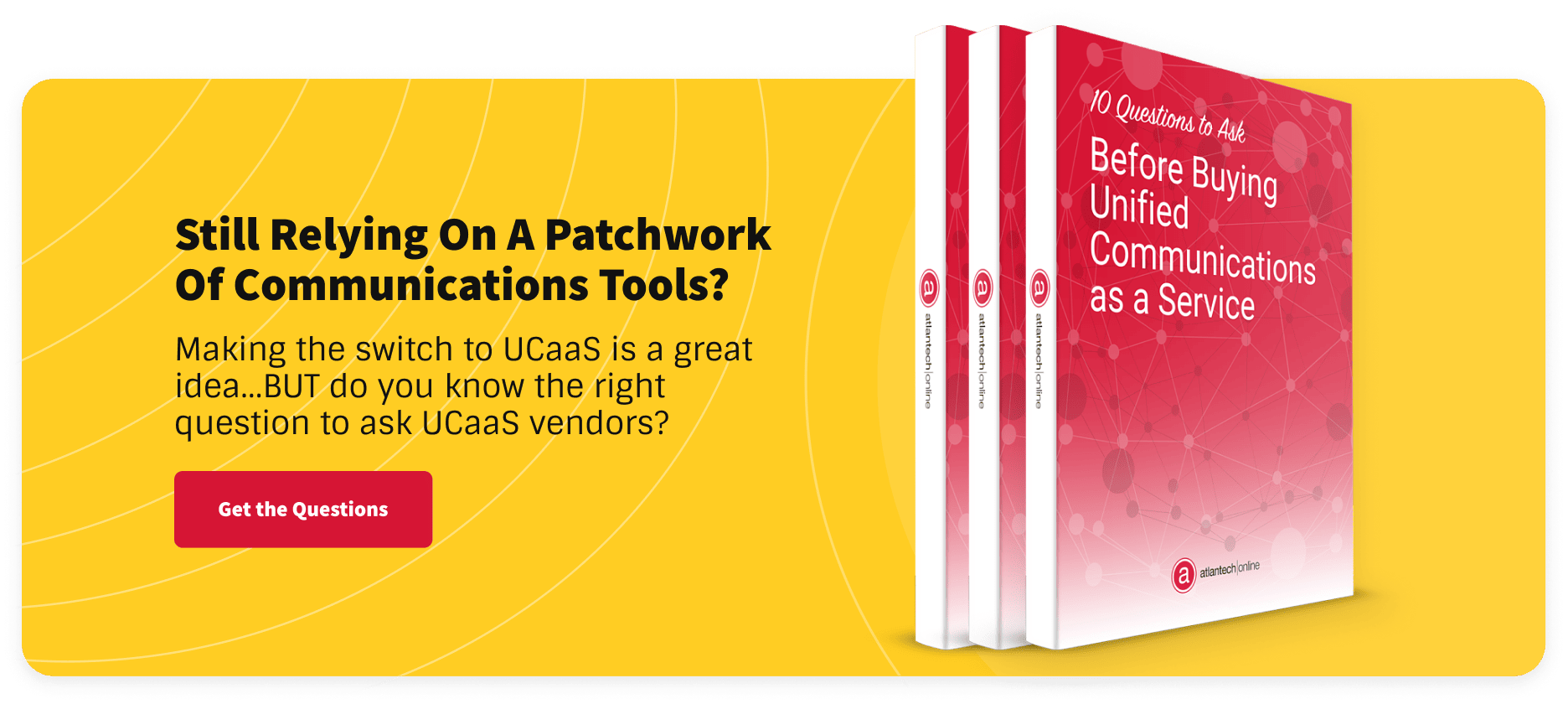SIP Trunking vs. Hosted PBX: 5 Key Differences

Drowning in a sea of Voice-over-IP (VoIP) acronyms?
If you don’t have a technical background, figuring out the difference between SIP Trunking and Hosted PBX can feel overwhelming. Even if you understand the basic differences, it can still be challenging to determine which is right for your business.
The truth is, selecting the right business communications system is not as simple as a choice between hosted PBX providers and SIP Trunking. In this blog post, we'll define both hosted PBX and SIP trunking, so you can see how they might fit into your VoIP decision.
SIP Trunking and Hosted PBX: What You Need to Know
One of the biggest decisions organizations make when using VoIP business phone services is deciding between a hosted private branch exchange (PBX) or a PBX hosted on-premises. If you use a hosted PBX, your vendor handles the technical aspects of providing service. The vendor will provide SIP trunks to enable you to make telephone calls over an Internet connection.
Organizations that opt to have a premise-based PBX will often manage the PBX themselves or pay the vendor to manage it on-site for them. Choosing between premise-based or hosted PBX options offers some trade-offs in flexibility, security, pricing, and ability to scale.
Hosted PBX
A hosted private branch exchange provides PBX functionality such as automated attendant, automatic call distribution, voicemail, and call transfer without having to own or maintain all necessary equipment on site.
A PBX works by routing calls to extensions while allowing your VoIP service provider to maintain all necessary equipment and software.
To learn more, we recommend Hosted PBX vs. Traditional On-Premise PBX: Which is Better?
Pros of Hosted PBX
- Not required to purchase, maintain, or upgrade PBX equipment
- Potential for greater cost savings with bundling unified communications
Cons of Hosted PBX
- Quality of service (QoS) depends on the consistency of your connection to the vendor's hosted service
- Service provider maintains a high degree of control
- Vendor feature and add-on service offerings can vary
SIP Trunking
SIP Trunking uses IP at the application layer to connect a phone call to the Public Switched Telephone Network (PSTN), replacing a traditional "phone trunk" such as a Primary Rate Interface (PRI) or analog line. SIP trunking can be used by an on-premise PBX that supports SIP and is a gateway to connect your internet telephony service provider to your PBX.
Trunking to a hosted PBX is typically done using SIP.
SIP Trunking Pros
- Leverages your IP Network, turning voice into an application on the network
- Additional call appearances (the equivalent of phone lines) can be added quickly without having to wait for more circuits to be installed
- Call appearances can be routed to other sites quickly, so you have flexibility with where phone service is being provided. This was indispensable for many of our customers during the global pandemic.
SIP Trunking Cons
- Effective bandwidth analysis to protect QoS (quality of service) is especially important, due to multimedia transmissions
Let’s examine how SIP trunking and hosted PBX differ in four categories: cost, services, scalability, and features.
Cost
Cost of Hosted PBX
The cost of hosted PBX services can vary between carriers. Typically, businesses can anticipate a small setup fee, some equipment investment costs, and a monthly recurring fee. Both will vary according to the number of users, add-on features, and other factors. If you already have handsets (phones) that interoperate with your carrier, your equipment investment costs will be significantly lower.
Pricing can vary according to add-on services, but will typically be in the range of $15–$50 monthly per phone line for unlimited local and long-distance calling.
Cost of SIP Trunking:
SIP trunking has the potential to carry low setup costs if you already have PBX equipment on-site. Your ongoing costs will run around the same as hosted PBX, around $20-$50 per month, charged by user rather than by phone line. Maintenance is handled in-house, making this a better solution for larger workplaces with a high volume of calls.
Overall, SIP trunking carries the potential for improved cost efficiency and cost savings.
Services
Services in Hosted PBX
Hosted PBX includes "standard PBX" services like voicemail, conference calls (such as Microsoft Teams Calling), and access to detailed call records. Additionally, you can include add-on services such as conferencing or mobility features, depending on your business's needs.
Services in SIP Trunking
SIP trunking's primary functions include locating the user, selecting the end system for a session, learning user availability, determining the capability of the end-user system, establishing a session (call), and managing the call session, including termination, transfers, and more.
Scalability
Hosted PBX Scalability
Hosted PBX is recommended for slower-expanding companies with a few dozen employees. Since your solution is hosted, it means you don’t have the equipment on-site, instead going through a third-party vendor. As a result, much of the scalability of your hosted PBX solution will depend on the vendor’s capabilities rather than the needs of your business.
There are benefits to not having equipment on-site at your business, however. One benefit is regarding outages and downtime. If a thunderstorm knocks out power to your building, your PBX is still up because it's hosted "in the cloud" rather than on-site.
SIP Trunking Scalability
SIP Trunking can require higher investment costs when it comes to scalability, due to the need to acquire new equipment and retire old equipment. You’ll also need to ensure you’re scaling your technical support in-house as you scale when you’re using this system.
The newness of this technology can make finding talent and troubleshooting help more challenging.
Features
Features of Hosted PBX
Hosted PBX runs your VoIP solution wholly over your internet connection. A downside of this is that an unstable internet connection can cause problems for your phone connection. Though a workaround is you can have a softphone on a mobile device that can still make/receive calls.
Another feature of hosted PBX is flexibility. When you’re using a hosted PBX, employees have access to their phone line even when they are not in the office, making this solution more convenient for traveling or remote workers.
Related Read: 5 Small Business Phone Service Providers for Remote Teams
Features of SIP Trunking
SIP trunking solutions can work for a remote workforce as well. For a remote worker to access their line in this scenario, they would need to have their home office phone mapped to their work phone.
Another feature of SIP Trunking relates to call volume and quality. This solution is generally known for delivering a high quality of connection even when call volumes are high.
A Final Note on SIP Trunking
SIP trunking isn't an alternative to hosted or on-premise PBX. It's an alternative to publicly-switched telephone network (PSTN) technologies, which include:
- T1
- Primary Rate Interface (PRI)
- Analog lines
SIP Trunking vs Hosted PBX: Which Is Best for Your Business?
Which flavor of VoIP is right for your business? If you're having trouble identifying the features and technologies your business needs, you're not alone. Atlantech has successfully helped many businesses navigate the confusing waters of technology to match the right system with the need.
To learn more about Atlantech Online's convenient and quality hosted voice services for businesses of all sizes, click here to contact an expert representative.


